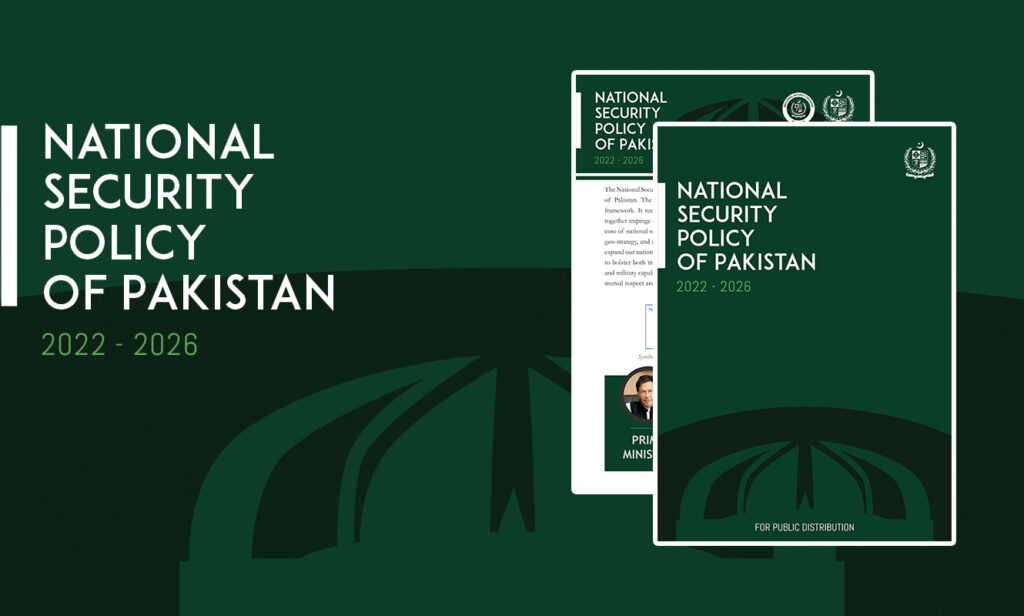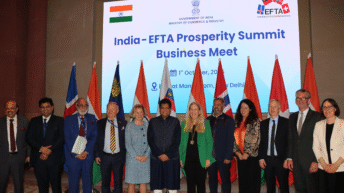
Ever since the National Security Policy (NSP) of Pakistan was unveiled by its Prime Minister Imran Khan on January 14 (a Friday), several commentators have written on it. Be it newspapers, TV channels or Social Media platforms, critique of the policy has been done, both in Pakistan and abroad. In the last fortnight, most write-ups have been rather tepid towards the claims made in the document. Imran and his National Security Advisor (NSA) Dr Moeed Yusuf have repeatedly stressed that it is for the “first time” that the NSP has been put down on paper in Pakistan.
Commenting on the NSP, Pakistani strategic affairs expert Ayesha Siddiqua wrote recently: The paper reads like a singer starting off with a good melody but soon losing the tune. Except for its verbose claims that the emphasis will now be geo-economics, not geo-strategy, Pakistan’s NSP gives no other concrete evidence that it has conceptualised a shift away from a military-centred approach. This is the general tenor of analyses by other commentators too, with hardly anyone declaring the policy to be an outstanding document.
Commenting on why a new NSP was needed, noted commentator Najam Sethi wrote: Perforce, a new National Security Policy has to be fashioned to withstand the loss of American aid and goodwill; to restore representative and credible legitimacy to the political system and to step back from perennial conflict with India over Kashmir. The trillion-dollar question is how?
Sethi is right about the “perennial conflict’’ as there is hardly a new word, phrase or expression which indicates that there is anything new on the issue, or that Pakistan is ready to change its perspective. On Jammu and Kashmir, the NSP says: “A just and peaceful resolution of the Jammu and Kashmir dispute remains a vital national security interest for Pakistan. India’s illegal and unilateral actions of August 2019 have been rejected by the people of “Indian Illegally Occupied Jammu and Kashmir” (IIOJK).”
It adds: ‘Indian occupation forces continue to undertake human rights abuses and oppression through war crimes, crimes against humanity, and genocidal acts in IIOJK. In addition, India continues to create false propaganda around the Kashmiri resistance to hide its illegal actions. Pakistan remains steadfast in its moral, diplomatic, political, and legal support to the people of Kashmir until they achieve their right to self-determination guaranteed by the international community as per 35 United Nations Security Council (UNSC) resolutions.’
That is misleading propaganda, to say the least, as the UN has made it clear that India and Pakistan need to settle things through bilateral dialogue. Incidentally, it needs to be emphasised here that as per the UN resolution of August 13, 1948, Pakistan was identified as an “aggressor’’ and asked to vacate territories of J&K, something it has not done till date. The relevant UN resolution was divided into three parts which were to be implemented successively in a chronological fashion.
Part I dealt with a ceasefire, calling for a complete cessation of hostilities. Part II dealt with a truce agreement. It asked for a “complete withdrawal of Pakistan’s fighting forces, including the army, tribes and other Pakistani nationals’’. After the Pakistani withdrawal, India was expected to withdraw the “bulk of its forces’’ reducing them to the minimum level required for maintaining law and order.
Part II was never implemented by Pakistan and further progress has been held hostage by the intransigent Pakistani attitude, which is reflected in the NSP document as well. At one place where Pakistan’s neighbourhood is discussed, the NSP says: ‘Pakistan, under its policy of peace at home and abroad, wishes to improve its relationship with India. A just and peaceful resolution of the Jammu and Kashmir dispute remains at the core of our bilateral relationship. The rise of Hindutva-driven politics in India is deeply concerning and impacts Pakistan’s immediate security.’
It adds: ‘Growing Indian arms build-up, facilitated by access to advanced technologies and exceptions in the non-proliferation rules, is a matter of concern for Pakistan. Besides impacting regional stability, such policies of exceptionalism also undermine the global non-proliferation regime. India’s pursuit of unilateral policy actions on outstanding issues are attempts (sic) to impose one-sided solutions that can have far-reaching negative consequences for regional stability.’
Taking its blame game further, the NSP states: ‘Pakistan continues to believe in resolving all outstanding issues through dialogue; however, recent Indian actions remain significant hurdles in this direction.’ Incidentally, a ceasefire is being observed between the two adversaries since February 2021, for almost a year. Yet the NSP adds: ‘Special attention is required to manage lingering border disputes which continue to pose security threats, particularly along the Line of Control and Working Boundary where ceasefire violations by India threaten civilian lives and property while endangering regional stability.’
It is pertinent to note here that the present ceasefire was first announced on November 23, 2003, following an understanding reached between then Pakistani President General Pervez Musharraf and Indian Prime Minister Atal Behari Vajpayee. Some years later, it withered due mainly to repeated ceasefire violations by Pakistan. However, as stated above, India has been scrupulously observing it after the DGMOs of the two nations agreed to it in February 2021.
The blame games and off-tangent remarks against India pervade the NSP. While discussing “Climate and Water Stress’’, the NSP reads: ‘Pakistan is among the countries most vulnerable to climate stress. Over 140 extreme weather events have occurred in Pakistan over the past two decades. Pakistan ranks third in the list of countries facing acute water shortage, with our per capita water availability standing at 908 cubic meters in 2021, down from 1,500 cubic meters in 2009. Nearly 80 per cent of the Indus Water Basin originates outside Pakistan, which makes access to trans-boundary watercourses a national security imperative.’
It needs to be said here that per capita availability, which has shrunk in Pakistan over the years, is directly linked to Pakistan’s uncontrolled population growth. India and Pakistan had signed the Indus Waters Treaty (IWT) on September 19, 1960, in Karachi. Under this treaty, Pakistan got 135 MAF of water and India only 33 MAF. Despite this 80: 20 disadvantage and despite being the Upper Riparian in relation to Pakistan, India has adhered to the treaty.
Pakistan has time and again alleged IWT violations by India, but at all international forums, whether during arbitration or judicial adjudication, Pakistan’s allegations have been found false. Pakistan’s population at present is around 22 to 23 crores but is expected to rise up to 35 crore (three hundred and fifty million) by 2050. The per capita water availability will go down substantially then but it will be the country’s own population explosion, and not India, which will be to blame even then.






Add comment